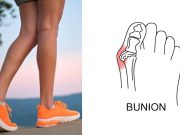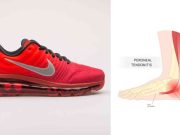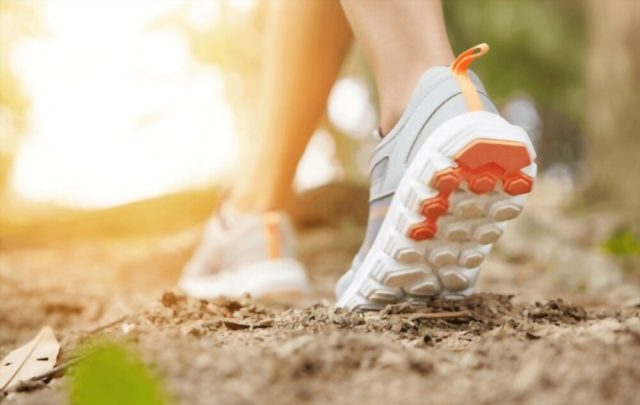As someone who loves hiking and running equally, I often find myself wondering whether or not my hiking shoes are suitable for hitting the pavement. It’s a common question for outdoor enthusiasts everywhere – can you swap out your running shoes for hiking boots? While it may seem like a simple answer, the reality is that there are a few factors to consider before lacing up your hiking shoes and hitting the trail as a runner. In this blog post, we’ll explore whether or not hiking shoes are good for running, as well as some potential benefits and drawbacks to keep in mind. So let’s dive in and figure out if hiking shoes are a viable option for running.
Table of Contents
Are hiking shoes good for running?
While hiking shoes can provide some support and stability for running, they are not typically recommended for running due to their heavier construction and lack of flexibility. Hiking shoes are designed for hiking on rugged terrain, providing protection and stability, while running shoes are designed for running, providing cushioning and flexibility.
Hiking shoes are generally heavier than running shoes, making them less comfortable for running, especially for activities requiring speed or agility. Additionally, the heavier construction of hiking shoes can increase the risk of muscle and joint strain over time.
Running shoes are designed specifically for running, with cushioned soles and flexibility to help improve performance and reduce the risk of injury. They are typically lighter and more breathable than hiking shoes, making them more comfortable for running.
Differences between hiking and running shoes:
Construction:
Hiking shoes are built with durable materials, sturdy soles, and ankle support to provide protection and stability on rugged terrain. On the other hand, running shoes are made with lightweight materials, flexible soles, and cushioned construction to provide comfort and support for running.
Purpose:
Hiking shoes are designed for hiking on rugged terrain, providing stability, support, and protection. Running shoes are designed for running, providing comfort, support, and flexibility.
Traction:
Hiking shoes are designed with deep lugs on the soles to provide grip and traction on uneven terrain while running shoes have a smoother soles to provide more flexibility and a smoother ride.
Weight:
Hiking shoes are typically heavier than running shoes due to their heavier construction and durable materials. Running shoes are designed to be lightweight to improve speed and agility.
Cushioning:
Running shoes have more cushioning in the sole to absorb the impact of the foot hitting the ground while running, while hiking shoes have less cushioning to provide a more stable base for hiking on rough terrain.
Breathability:
Running shoes are designed to be more breathable than hiking shoes, with mesh or other materials that allow air to flow through the shoe and keep feet cool and dry during a run.
Ankle Support:
Hiking shoes have ankle support built into the design to provide stability and protect against ankle sprains on rough terrain. In contrast, running shoes have little ankle support for more natural movement.
Pros and cons of using hiking shoes for running:
Regarding using hiking shoes for running, there are pros and cons. Hiking shoes offer more support and stability due to their stiffer soles and structured upper, which can benefit those with weak or unstable ankles. However, they are also heavier and less breathable than running shoes, affecting your speed and endurance.
Another factor to consider is the deep lugs on hiking shoes which are great for traction on rough terrain but can be cumbersome and awkward for running on smoother surfaces. I have tried running in my hiking shoes before, and while they did offer good support, I found them too heavy for longer runs. For shorter, trail-specific runs, they may work just fine.
Can You Run In Hiking Shoes?
Suppose you can hit the trail running in your trusty hiking shoes. As someone who loves hiking and running, I’ve seriously thought about this question. And the answer is yes, you can technically run in hiking shoes. However, it comes down to what type of running you plan.
Your hiking shoes will probably be fine if you’re just looking to jog along a well-trodden path. But if you plan on serious trail running, you might consider investing in a pair of trail running shoes designed specifically for that purpose. While hiking shoes are built for stability and support, they can be heavier than trail runners and offer less grip for speedy on rough terrain. So, it’s all about finding the right shoe for the activity you’re planning on doing.
When To Wear Hiking Shoes?
I turn to my hiking shoes when I know I’ll tackle rough, unpredictable terrain. When I’m heading out for a long day of hiking, there’s no question that my sturdy, supportive hiking shoes are the way to go. They offer better protection against sharp rocks and are designed to withstand rugged, abrasive conditions.
Plus, I know that they’ll hold up under the weight of a heavy pack, which is important when carrying all my gear for an overnight trip. However, I wouldn’t necessarily choose my hiking shoes for a casual jog or run on a paved path – for that, I’d stick to my lightweight, cushioned trail running shoes. Knowing when to wear which type of shoe can help make the most of your outdoor adventures and ensure you’re comfortable and supported every step.
When To Wear Trail Running Shoes?
When it comes to hitting the trails, trail running shoes are often my preferred choice. They offer a support, protection, and weight blend that aligns with my running style and provides the comfort I need to tackle rugged terrain. Plus, they’re designed to be nimble and fluid, essential when aiming for faster paces or navigating tight turns. That said, I may opt for hiking shoes if I know I’ll carry a heavier load or face harsher conditions requiring a sturdier shoe. Overall, choosing the right footwear is important based on your specific needs and the environment you’ll be in.
Can You Hike In Running Shoes?
As someone who enjoys hiking and running, I know firsthand the importance of having the right footwear. While wearing your trusty Running shoes on a hike may be tempting, it’s not always the best option. Hiking shoes are the way to go regarding rough terrain and unpredictable weather conditions. They provide more support, protection, and durability for a safe and comfortable hiking experience. While you technically can hike in running shoes, it’s not recommended if you want to avoid blisters, sprained ankles or other injuries. Stick to wearing hiking shoes for hiking and running shoes for running, and your feet will thank you.
Features of Hiking Shoes:
- Durable Materials: Hiking shoes are typically made from tough and durable materials such as leather, suede, or synthetic fabrics that can withstand rough terrain and protect your feet from sharp rocks, branches, or other obstacles.
- Sturdy Sole: The sole of a hiking shoe is typically thicker and more rigid than a running shoe. The sole is designed to provide stability and support on uneven terrain and to prevent you from slipping or losing your balance.
- Heavyweight Construction: Hiking shoes are generally heavier than running shoes due to their durable materials and thick sole. The extra weight helps to provide stability and support on uneven terrain, but it can also make them less comfortable for running or other activities that require speed or agility.
- Ankle Support: Hiking shoes often have ankle support built into the design, which helps to prevent ankle sprains or other injuries on rough terrain. The ankle support can be a high-cut upper or additional padding around the ankle area.
- Waterproofing: Many hiking shoes are also designed to be waterproof or water-resistant, which is important for hiking in wet or muddy conditions. Waterproofing can help to keep your feet dry and prevent blisters or other foot problems.
Features of Running Shoes:
- Lightweight Materials: Running shoes are made from lightweight materials like mesh or synthetic fabrics to reduce weight and improve running speed and agility.
- Flexible Sole: The sole of a running shoe is designed to be flexible and move with your foot as you run. This allows for a more natural stride and reduces the risk of injury from a stiff or inflexible sole.
- Cushioned Construction: Running shoes have a cushioned construction, with a thick layer of foam or other materials in the sole to absorb the impact of your foot hitting the ground. This reduces the strain on your joints and helps to prevent injuries like shin splints.
- Breathable Materials: Running shoes are designed to be breathable, with mesh or other materials.
- No Ankle Support: Unlike hiking shoes, running shoes do not have ankle support built into the design. This is because ankle support can limit your range of motion and affect your stride, making it harder to run comfortably and efficiently.
Read More: 11 Best Cheap Hiking Shoes Read More: 10 Best hiking shoes for Women
In conclusion, hiking and running shoes have several differences in construction, purpose, performance, comfort, and injury risk. If you’re planning a hiking trip, investing in a good pair of hiking shoes with sturdy soles and ankle support is important. If you’re a runner, investing in a good pair of running shoes with cushioned soles and flexibility can help improve your performance and reduce the risk of injury.
































